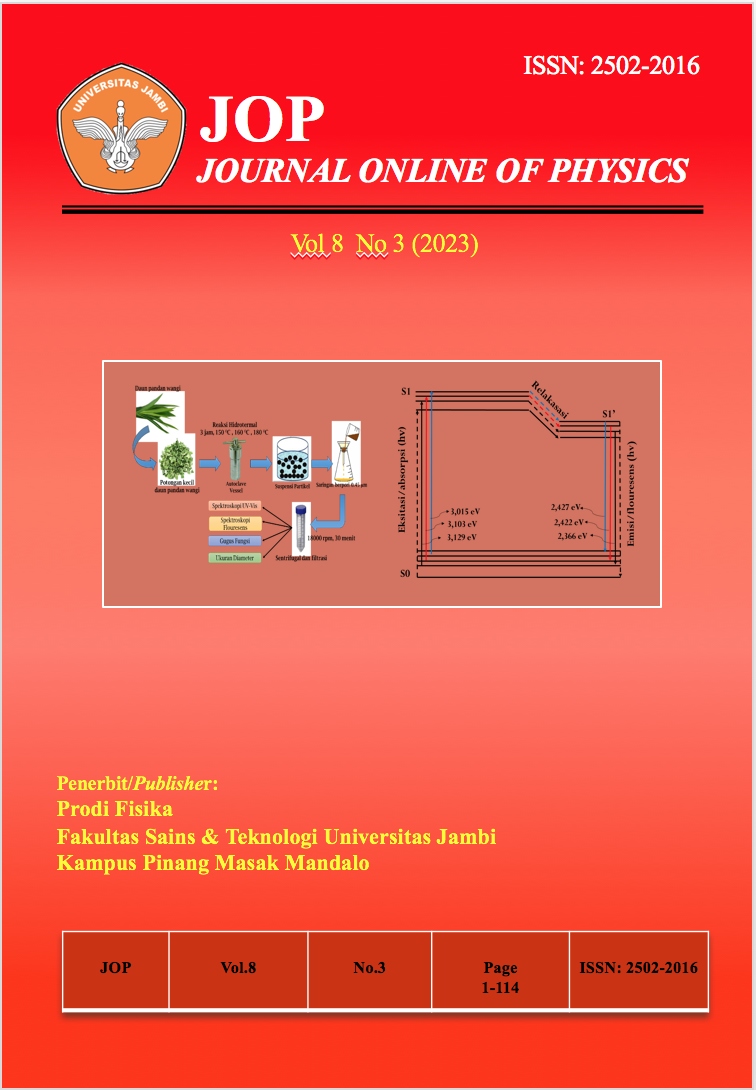SISTEM MONITORING KWH METER DIGITAL BERBASIS IOT PADA LABORATORIUM PERALATAN MEDIS
DOI:
https://doi.org/10.22437/jop.v8i3.26931Keywords:
Laboratory; kWh Meter; IoT; PZEM-004T sensor; MonitoringAbstract
The educational process, which is supported by adequate laboratory facilities and infrastructure, will produce professional higher education tri-dharma outputs, both for students and lecturers. The Medical Equipment Laboratory is a place where experimental studies with various equipment and devices, analyses, and observations are carried out. The amount of electrical energy used by a university can be measured using an electric energy meter, namely the kWh meter, but the university cannot monitor which building or room uses the most electrical energy because it only knows the amount of power used each month. Given these problems, a digital kWh Meter monitoring tool based on the Internet of Things (IoT) is designed to measure the amount of current, voltage, power, and costs that must be incurred while using medical equipment and can then be monitored in real time using the Blynk application as the server. The implementation system for monitoring the kwh meter using the PZEM-004T sensor has a very good accuracy rate of 99.52% for measuring voltage and 99.87% for measuring current on medical equipment in the medical equipment laboratory at the PGRI Yogyakarta University. It was found that the greater the applied load value, the more the impact on data outputs such as current and voltage would affect the size of the monthly electricity bill. The monitoring system can be carried out within a radius of 20 meters as long as the smartphone is connected to a WiFi connection. Monitoring activities and electrical device control activities can be carried out.
Downloads
References
A. P. Deni dan R. Mukhaiyar, “Monitoring Daya Listrik Secara Real Time,†Vote Teknika, vol. 8, no. 2, pp. 26-34, 2020.
S. Mustafa dan U. Muhammad, “Rancang Bangun Sistem Monitoring Penggunaan Daya Listrik Berbasis Smartphone,†Media Elektrik, vol. 17, no. 3, pp. 55-62, 2020.
P. Gokhale, O. Bhat, and S. Bhat, “Introduction to IOT,†no. January, pp. 0–4, 2018
C. Salazar, “Internet of Things-IOT : Definition , Characteristics , Architecture , Enabling Technologies , Application & Future Challenges,†no. May 2016, 2019.
G. Kotonya, “IoT Architectural Framework : Connection and Integration Framework for IoT Systems,†pp. 1–17, 2018.
F. Joe and J. Joseph, “IoT Based Weather Monitoring System for Effective Analytics,†no. 4, pp. 311–315, 2019.
Fitriandi, A. F., Komalasari, E., & Gusmedi, H. (2016, Mei). Rancang Bangun Alat Monitoring Arus Dan Tegangan Berbasis Mikrokontroler Dengan Sms Gateway. Jurnal Rekayasa Dan Teknologi Elektro, 10, 2.
Prayitno. Budi., Palupiningsih. Pritasari, dan Agrtriadi. Herman Bedi. 2019. Prototipe Sistem Monitoring Penggunaan Daya Listrik Peralatan Elektronik Rumah Tangga Berbasis Internet Of Things dalam Petir: Jurnal Pengkajian Dan Penerapan Teknik Informatika, 12(1), 72-80. Jakarta: Institut Teknologi PLN.
Nugraha. Azis Wisnu Widhi, Rosyadi. Imron, Nugroho. Fajar Surya Tri, dan Winasis, 2016. Design Sistem Monitoring Sistem Photovoltaic Berbasis Internet of Things (IoT). Bandung: Universitas Gajah Mada, 5(4).











